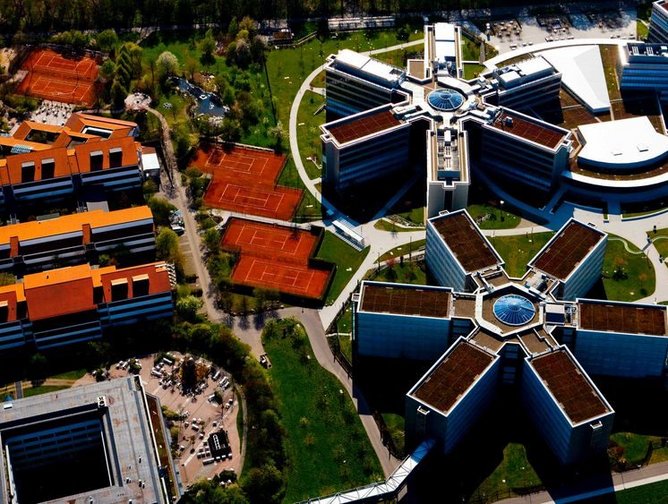SAP Cloud for Utilities: an integrated industry solution
SAP Cloud for Utilities (C4U) is a pioneering new end-to-end portfolio of solutions from SAP, intended for use in the Lead-to-Cash process employed by utilities companies. Three individuals from the wider SAP organisation are guiding its market introduction. Klaus Lohnert is programme director and the overall lead of the project. Mateu Munar, Senior Director, Industry Business Unit Utilities and Stefan Engelhardt, Global VP Go-To-Market Strategy Industry Business Unit Utilities are also part of the C4U leadership team and in charge of the solution management for SAP’s Utilities portfolio. “As part of that team,” Munar explains, “I have the role of the go-to-market lead for the new SAP Cloud for Utilities suite.” Engelhardt adds: “We are the solution owner for the complete business suite. In my role, I particularly support the C4U leadership board from a strategic perspective, as well as Mateu and the team with our go-to-market activities.”
In terms of overall structure, Lohnert explains that “we have four streams. There is the development stream, where we develop the solutions. Then we have the go-to-market stream, in which Mateu and Stefan are allocated. Operations, because this is a cloud solution which we are operating, and the final part is the transition service we offer to make implementing the solution easier for our customers.”
The complexity of the behind the scenes structure reveals the ambition of the solution. Comprising a portfolio of solutions useful to the utilities industry, SAP C4U supports products from modelling through to the market, as well as demand prediction, monitoring of customer behaviour, managing billing, customer service and adherence to regulations. “It's a suite that covers the entire end-to-end process,” says Munar. ”We provide a software-as-a-service, cloud native solution. It's a unique service, with no competitor offering such a complete suite in the cloud. It's important to emphasise the technological approach, because that is what facilitates key business leads that we want to address, in terms of reducing costs and adoption time.” Engelhardt adds that the offering is flexible to the specific needs of customers. “The architecture is modular,” he says, “so we leverage the independent cloud components that SAP offers. For service, for instance, for sales, for marketing, for commerce, for billing and revenue management. We're bringing them together, extending them from an industry perspective - but you still have the option to buy and run them separately.”
Motivating customers to require a solution such as SAP C4U is an evolving energy market, influenced by factors such as the rise of renewables and the decentralisation of power production. “The traditional commodity business no longer provides the margins or the revenue that is required,” Engelhardt warns. “Utilities have to extend their scope. They have to go beyond the traditional energy business in order to offer value added or even completely independent service offerings.” SAP C4U is uniquely equipped to enable those in the industry to compete in this brave new world. “For growth, they will have to look to new business dimensions, which is why the platform supports non-commodity and multi-service capabilities,” Engelhardt adds. “We leverage elements and know-how from the 26 industry solutions we have at SAP such as telco, automotive and so on, bringing them together in order to allow utilities to offer new bundled business services. Of course we also automate the traditional processes of the commodity business. That is the way towards what Klaus calls the ‘self-running enterprise’.”
Lohnert identifies three key performance indicators that SAP seeks to address with the solution, including a reduction in the cost to serve, a decrease in the time to market for both classical and new energy offerings and an increase in revenue and profitability. Leveraging the cloud is one way of achieving that, but SAP is aware that its customers will be at varying stages on the cloud journey. “A lot of our development efforts are directed towards integration,” says Munar. “We provide a cloud offering, but we have to understand and be conscious of the fact that a big part of our business is on-premise. Essentially, the scenario is evolving towards a hybrid model. Any customer can capitalise upon the investments that they have made in SAP, because we are securing that evolution with integration concepts out of the box. If they want to move into a hybrid mode, they can go there. If they want to go into a full cloud mode, they can do that as well.”
It’s not just about delivering growth. C4U can also help companies achieve increased efficiency, and with efficiency comes more sustainable ways of doing business. “Utilities are at the heart of the energy revolution that is going on globally,” says Engelhardt. “They are in the driver's seat to optimise, manage and build value added services in order to achieve efficiency and to benefit from new business opportunities. That is a key focus for us as we shape and develop the solution portfolio.” While SAP C4U is a business suite rather than a technical system, it still has a part to play in this transition. “What's happening at the moment is a tremendous infrastructure program, going from a centralised to a decentralised system,” says Lohnert. “The biggest challenge we have is to accelerate this process, and we offer services to access end customers that want to buy a solar panel or a heating system or charging stations.”
Having cultivated a successful relationship with professional services firm Accenture, which saw SAP contribute from a product side and Accenture from a services side, C4U represents a co-development between the two organisations. “Accenture are market leaders and they know the industry well,” says Munar. “They know our solutions, having done this together in the past. From a go-to-market perspective, and from a development perspective, it's a win, win.” Engelhardt concurs, adding that “we have many equally important partners, such as rku.it, smartservices, Cronos, bpc, Natuvion, E&Y, Atos or IBM.”
Going forwards, the aim for C4U is clear, as Engelhardt articulates. “There is one simple goal. We want to help our customers to transform their business into the next dimension, and we're doing the same on our side. At the same time, I think what we are seeing happening that is interesting for us is more and more players coming from other areas and entering the space. Maybe our customers of the future are not just utilities, but other service providers who start to complement services with energy. Our platform should provide both with the necessary tools and processes to be successful.”



